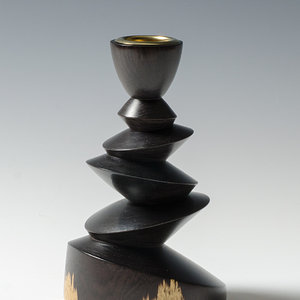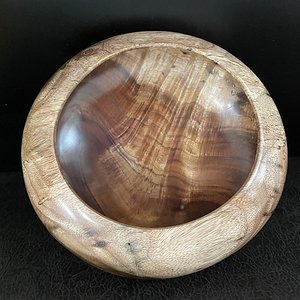This box's exterior shows off the beautiful vein-like pattern of the cambium layer. I turned it on two axes so you get a glimpse of the wood beneath the cambium. The lid is made of pine fatwood. Fatwood isn't really conducive to sanding, so it's a tool finish. To add a bit of fun, I made the lid into a spin top, with the contact point being being an oversized glass marble. This decreases the friction and adds a bit of color. Of course, the top is very wobbly, give the partial natural edge I kept to match the box's form. Still, it's a satisfying spin!
7"h x 3.5"d








